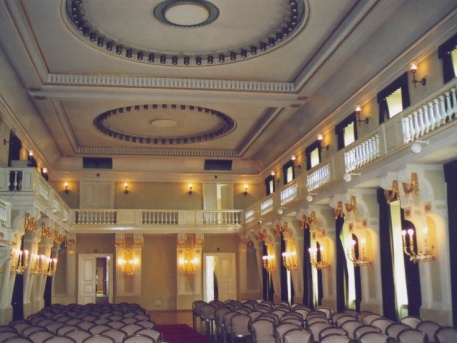In the seventeenth century the Habsburg rulers elevated their supporters to the high nobility, and granted them estates and titles. Among those who benefited in this way were the Bethlen (Bethlen branch), Bánffy (Losonc branch), Kemény (Magyargyerőmonostor branch), Haller (Hallerkő branch) and Kornis (Göncruszka branch) families.
In the nineteenth century there were 50–60 families in the upper nobility in Transylvania. The liberation of the serfs in 1848 caused difficulties for aristocratic families in general, no less in Transylvania. Time, however, had little effect on the situation described above, until the nobility was abolished. At the end of the nineteenth century, the only landowner who could compete with the magnates in Transdanubia, for instance, was Count György Bánffy, whose estates measured some 26,000 holds (36,974 acres).
At the same time, sixty aristocrats had estates above 2,500 holds (3,535 acres), with half of the large estates controlled by just forty people. The estates underwent modernisation following the Compromise of 1867, with many being developed into model farms. Few aristocrats, however, pursued a career in economics, apart from dealing with their own estates, and the majority spent their time in politics, state service and social life. Dezső Bánffy became Prime Minister of Hungary, and there were many Transylvanians in the upper chamber of Parliament until the property census of 1885, after which their numbers dwindled. The Transylvanian aristocracy was less open than most of the Hungarian upper nobility when it came to marriage, adhering far more strictly to three criteria: spouses were expected to be of the same nationality, the same social rank, and the same religious denomination.

Life centred around the chateau or castle, or at least, it did until they had to be abandoned beginning in the mid-1940s. Many families were evicted overnight by the Romanian Communist authorities. The residents of the Renaissance chateau in Keresd (Criş) were given just one day to vacate the premises, and most of the complex was taken over by the local cooperative.
In 1970, however, one of Ceauşescu’s film directors shot a scene for his grandiose picture about the Romanian hero Michael the Brave here at the chateau, quite barbarically setting fire to its roof. The Bánffy Chateau in Fugad hosted a school, Bonchida was destroyed by German bombs, and the majority of chateaus were used as educational establishments, hospitals, psychiatric hospitals or orphanages. Worst of all was when the properties were left empty, for they not only fell into disrepair but were taken to pieces through the actions of people and time.
Nowadays, the chateaus of Transylvania (and the whole of Romania) are being surveyed by a society founded by a group of art history students in Bucharest, named Monumente Uitate [which they translate as: (Un)Forgotten Monuments]. Among their collaborators is Kálmán Teleki, lord of the chateau in Gernyeszeg (Gorneşti). The society maintains a register that includes 500 chateaus in the areas that were formerly part of Hungary: Transylvania, the Banat, the Partium and the Máramaros (Maramureş) region.
Title image: Bethlen Castle in Keresd (Criş)
To be continued